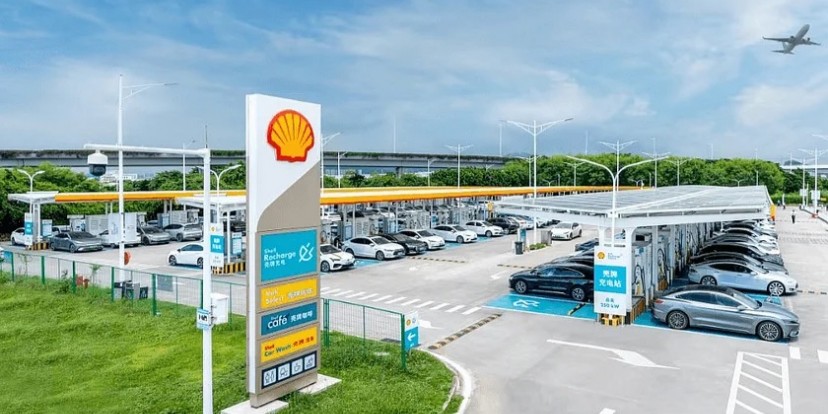Innovative Public Charging Networks Boosting Electric Car Range in 2023
As electric vehicles (EVs) gain traction globally, innovative public charging networks are crucial in boosting electric car range and ensuring widespread adoption. According to BloombergNEF, the number of EVs on the road is set to exceed 145 million by 2030, highlighting the critical need for efficient and accessible charging solutions. In 2023, public charging networks have evolved to address this demand, providing faster and more convenient options for EV owners. This article will explore how these advancements are enhancing the EV experience, offering practical insights for current and potential EV drivers.
The Rise of Ultra-Fast Charging Stations
Transforming EV Charging Landscape
The evolution of ultra-fast charging stations is a game-changer in the EV industry. With charging times significantly reduced, these stations are key to boosting electric car range. Tesla’s Supercharger V3, for example, can charge a Model 3 to 75 miles of range in just 5 minutes. Similarly, Porsche’s Taycan is compatible with 350 kW chargers, allowing it to gain 62 miles of range in under 4 minutes, as reported by InsideEVs.
Key Features of Ultra-Fast Charging Networks
- Speed: Charging times reduced from hours to minutes.
- Convenience: Strategically located in urban areas and major highways.
- Compatibility: Serving a wide range of EV models and charging standards.
These advancements not only enhance the driving experience but also alleviate range anxiety, a common concern among potential EV buyers.
Expanding Public Charging Infrastructure
Global Expansion and Accessibility
In 2023, governments and private enterprises are investing heavily in expanding public charging infrastructure. According to the International Energy Agency (IEA), the number of public charging points worldwide reached 1.3 million in 2022, with a projected annual growth rate of 30%. This expansion is crucial for supporting the increasing number of EVs and ensuring accessibility for all drivers.
Notable Developments in 2023
- Europe’s Green Charge Initiative: Aiming to install 1 million public chargers by 2025.
- U.S. National EV Charging Network: A $7.5 billion investment to create 500,000 chargers by 2030.
- China’s Rapid Deployment: Over 800,000 public chargers, with plans to double by 2025.
Charging Accessibility in Urban and Rural Areas
Efforts are also underway to ensure even distribution of charging stations across urban and rural areas. This strategy is vital for bridging the gap in accessibility and promoting EV usage in less populated regions.
Smart Charging Solutions and Technology
Integrating Smart Technology
Smart charging solutions are integral to the future of public charging networks. These systems optimize energy consumption and integrate renewable energy sources, making EV charging more sustainable. Companies like ChargePoint and ABB are at the forefront of this innovation, offering solutions that include:
- Dynamic Load Management: Adjusts the charging power based on grid demand.
- Renewable Integration: Utilizes solar and wind energy for charging.
- User-Friendly Apps: Allow drivers to locate, reserve, and pay for charging sessions seamlessly.
Benefits of Smart Charging
- Efficiency: Reduces grid strain and optimizes energy use.
- Sustainability: Lowers carbon footprint by utilizing clean energy.
- Convenience: Enhances user experience with real-time data and remote access.
Practical Tips for EV Owners: Maximizing Range and Efficiency
Choosing the Right Charging Option
For EV owners, understanding the different types of charging options is crucial for maximizing range and efficiency.
- Level 1 Chargers: Suitable for overnight home charging; offers 2-5 miles of range per hour.
- Level 2 Chargers: Ideal for daily use; provides 10-20 miles of range per hour.
- DC Fast Chargers: Best for long trips; delivers 60-100 miles of range in 20 minutes.
Best Practices for EV Charging
- Plan Your Route: Use apps like PlugShare to locate charging stations along your journey.
- Optimize Charging Times: Charge during off-peak hours to save on energy costs.
- Maintain Battery Health: Avoid frequent full discharges to extend battery lifespan.
Conclusion: The Future of EV Charging Networks
In 2023, innovative public charging networks are pivotal in boosting electric car range, making EVs more accessible and appealing to a broader audience. As ultra-fast charging stations proliferate and smart technology integrates into the grid, EV drivers can enjoy a more efficient and sustainable experience. With continued investment and technological advancements, the future of mobility looks promising.
Are you ready to join the electric revolution? Consider upgrading to an EV and experience the benefits of cutting-edge charging networks firsthand. The road ahead is green and exciting, promising a cleaner, more sustainable future for all.
For more insights and updates on the EV industry, subscribe to our newsletter and stay informed about the latest trends and innovations in electric mobility.

